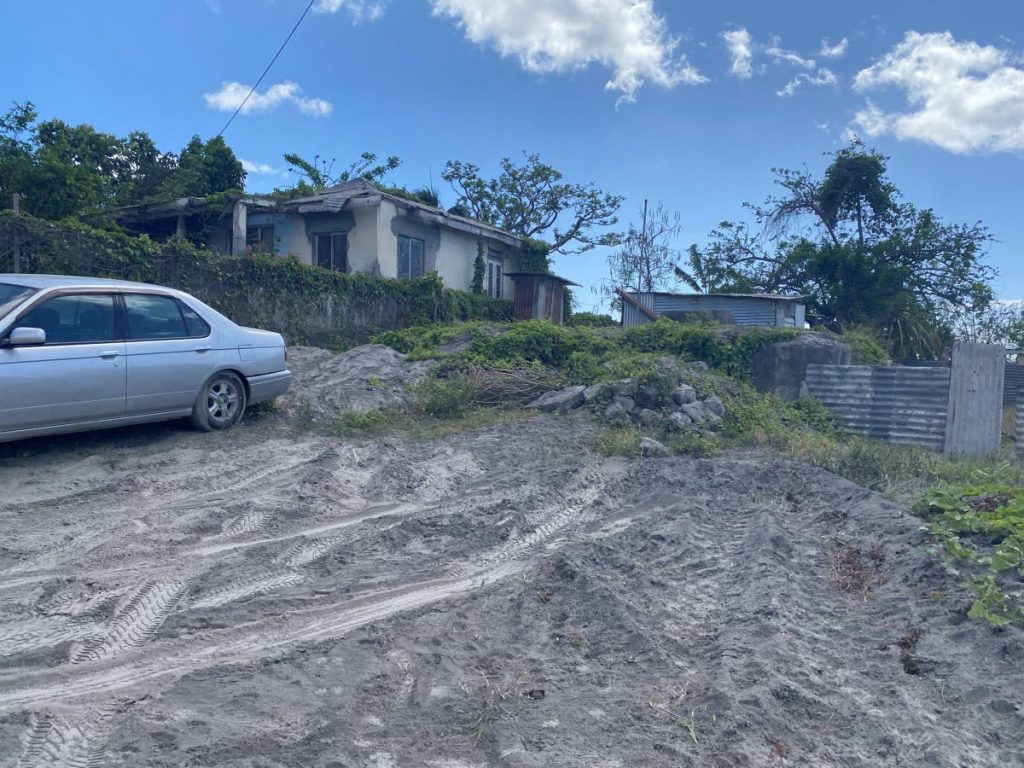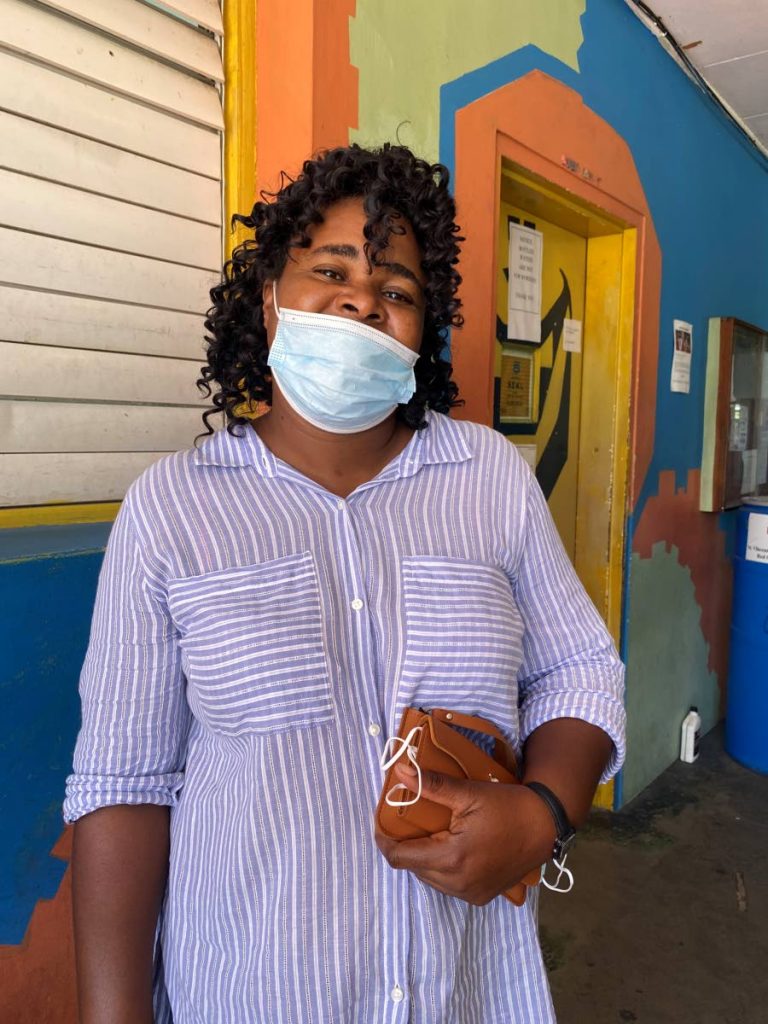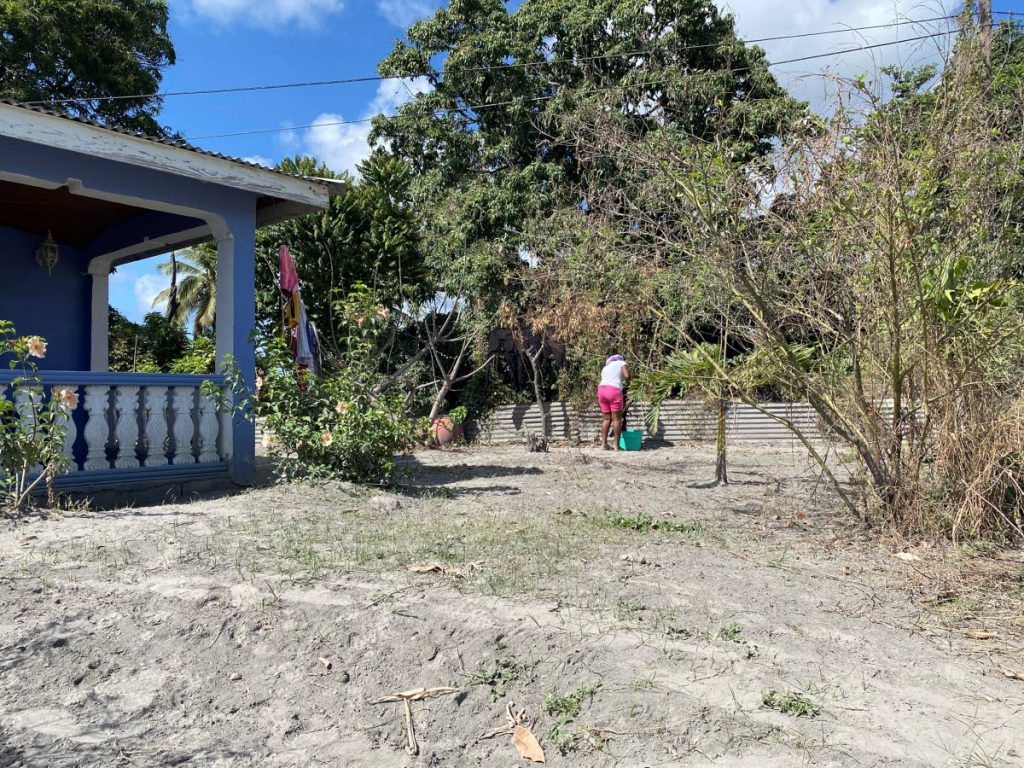St Vincent's orange-zone residents return home

Searchlight newspaper, SVG, for Newsday
While some residents of the orange zone in North Leeward, St Vincent, have begun moving back into their houses, the battle with the volcanic ash will stretch on.
The ash was emitted from the island's La Soufriere volcano, which began erupting on April 9 after being dormant since 1979.
The main road to the area is much clearer than it was last month, and cars can now pass each other without raising great clouds of dust that need to settle before either could move. Ash still lies on the ground, but the trees and vegetation are green once more.
However, some driveways and areas off the beaten path in the northwestern village of Troumaca still have a thick layer of formidable substance.
Nonetheless, given the green light by the authorities, residents are starting to return to the area and are cleaning up.
In the yard of her home, hanging out laundry as the ash lies around her, 36-year-old Michelle Wyllie explained, “For the entire day Saturday I cleaned the interior. What happens is that on a daily basis you have to be mopping, because if you notice we're living in a very dusty area. Apart from the ashes, it's usually very dusty, especially in the dry season.”
Despite the daily wiping and constant cleaning, “I came back because I wanted to be at home, I wanted to be in the comfort of my own home. It's never easy to leave your home and go somewhere else...
“We've been away for a month, and I think a month has been enough for me. I just wanted the all-clear to come back home, and once the volcano is not in a dangerous period, then I don't see any reason why I should not be able to come back home,” Wyllie said.
“It's not easy, because I have all of this to deal with. You have to be bathing a lot, you have to be wiping a lot and so forth. It's a sacrifice, But then, I prefer to be in the comfort of my house."
She has cleaned the ash off the roof but needs someone to help her with her yard.

In terms of food, water, internet access and electricity, there are no problems.
So in thinking about the future, “Our main concern would be for the farmers, livestock, getting food for the livestock, and that form of food in terms of agricultural products.”
Dealing with the ash is just a matter of time.
Young sports coach Romique Hooper doesn’t think there will be sports in North Leeward for some time until everything settles down.
Hooper has returned home several times, but the rest of his family returned for the first time on May 12. Their first order of business, as is everyone else’s, is to clean up. Shovels and clothes are some of the tools of choice.
He's standing on a porch that he has washed out several times because of the ash.
Asked how long he thinks the cleaning will take, the coach gave an audible sigh.
“Days, or even months, because even though I clean here because the road is so dusty,” it keeps blowing up with every passing vehicle or wind.
“I alone can't come and clean, everybody has to come back in the neighbourhood to start doing their cleaning,” he said, but added, “Everything will be, hopefully, back in order soon.”
Other residents may be hesitant to return because of the ash, he agreed,
“You find most times these days a lot of people are suffering from asthma and all sort of thing so, yeah... so some people might have the fear of the ash, hoping that you could get cleaned up.”
Dennie Sylforde has lived in Troumaca for 47 years but had to move out when the plume began approaching after an eruption. He and his family are not returning permanently just yet, but only to clean up, as some of his children have problems with the dust.

From his house he has a perfect view of La Soufrière, as he explains, “…it's livable but it's going to be challenging, it's going to be challenging, especially as it's windy now.”
When he first came back some weeks ago, it was to tackle the roof, which he said he did in one day with the help of two people. Many other residents have also cleaned their roofs to reduce the possibility of their collapsing.
He was a child when the volcano erupted in 1979, but says, “I remember the ash, but it's a big, big difference. And ‘79, I think it was like one or two times in the day (the volcano) went off, but this time was...compare this time to that time, it's a lot, yeah.
“I know it's going be only for a time, you know, because once you stay like this and the rain keeps coming and you dwell in it... it's going to go to nothing, it's going to be back to normal.”
The ash is proving a barrier to some other orange-zone residents returning home. One is Petit Bordel resident Asunda Matthews, who is staying at the Bethel Secondary School.
In terms of her property, “I went back three times, and it's in a state, because it's like the more you clean...but you return a week later…it like it never even touch...
"Outside is not clean, and if you try and clean inside and outside is not clean, it doesn't make any sense, because everything from the outside blow back inside,” she explained.
So rather than cleaning repeatedly, “I am not doing that. I am waiting and see how much as possible outside can get cleaned.”
She’s worried about her children.
She’s also a bit scared to return because she’s not a scientist, and there is still uncertainty, and she doesn’t know whether the volcano, which last erupted on April 22, might erupt again.

Comments
"St Vincent’s orange-zone residents return home"